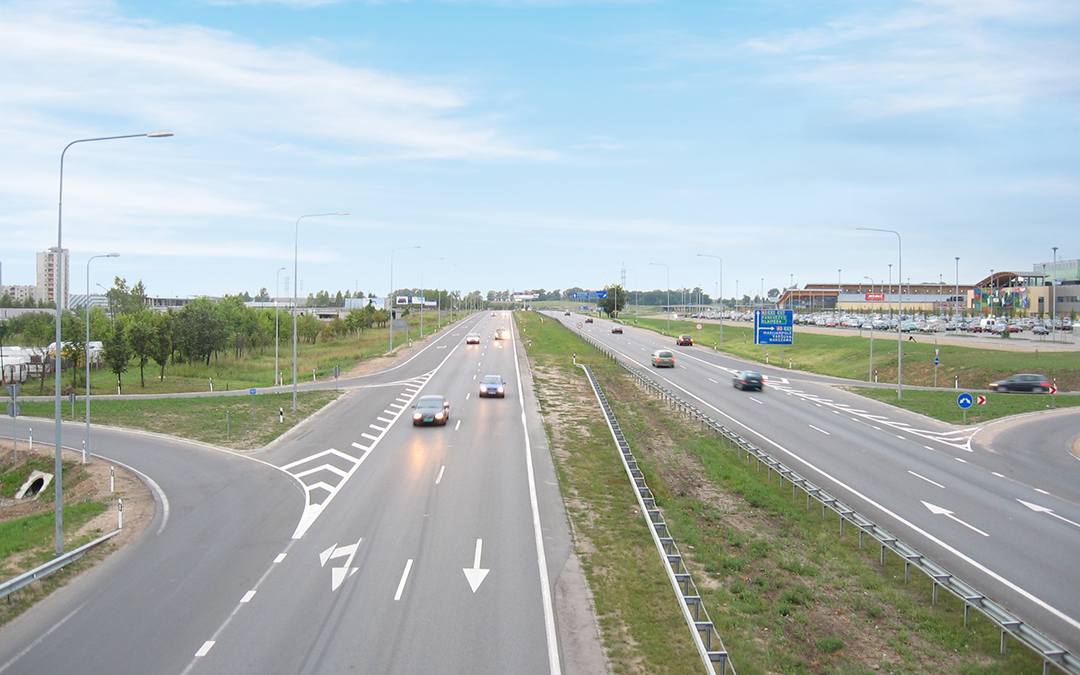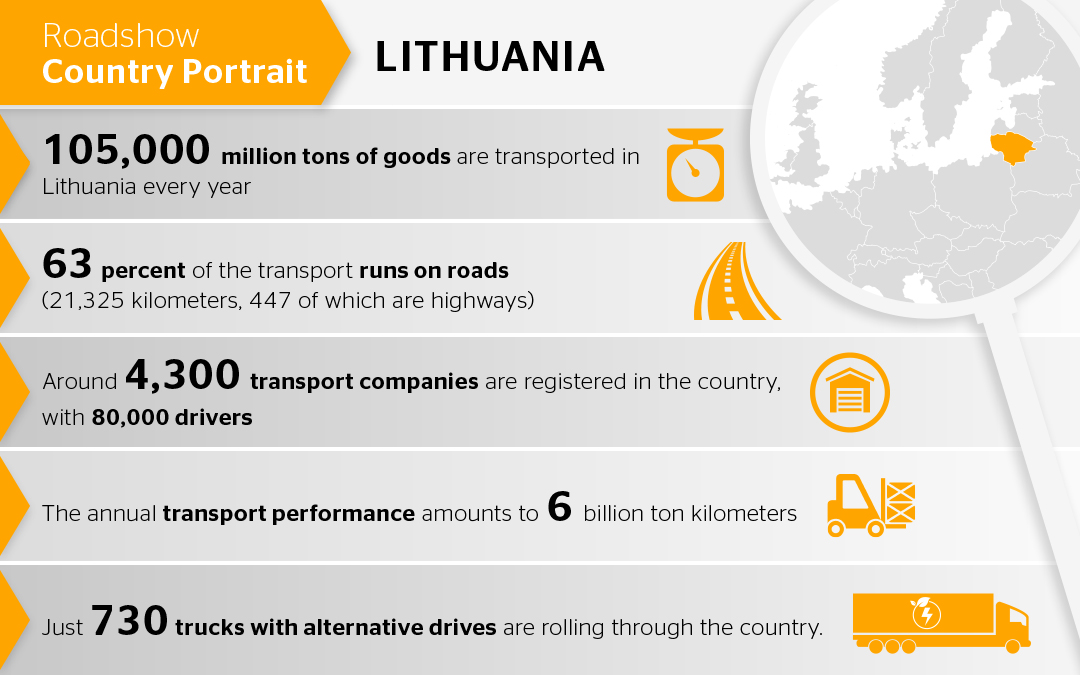Lithuania’s economy is diverse. The most important industries are biotechnology with numerous research and development centers, wood processing and tourism – and the logistics industry itself. For example, the small country ranks second in the EU in cabotage traffic (transports in other countries), right after Poland.
On the road in France and Germany
Lithuania handles the majority of its cabotage traffic in countries with which it has no borders: just over 40 percent in France, slightly less in Germany. Poland, Germany and Latvia are currently the main trading partners with which it has close economic ties.
This seems a bit strange: While other countries are happy to use the cheap transport services from Lithuania, transport in the country costs more than in many other states.
Important transit country
105 million tons of goods are transported in Lithuania every year. Sixty-three percent of the transport runs on roads (21,325 kilometers, 447 of which are highways), 19 percent by rail (with a strong downward trend), 13 percent by air and 5 percent by inland waterways. Driver shortage? No such thing! Around 4,300 transport companies are registered in the country, with 80,000 drivers.
Lithuania is an important exporter of chemicals, machinery, mineral products, textiles, plastics and foodstuffs. It also imports many products in these categories, as well as metals and transport equipment. Lithuania is also very important as a transit country between Central and Northern Europe, especially for oil. All this results in an annual transport performance of around six billion ton kilometers. Domestic transport accounts for about 40 percent of this.
The most important transport links are the A1 from the capital Vilnius to the port city of Klaipėda and the E67 (Via Baltica), which connects Prague, Wroclaw and Warsaw via the Lithuanian cities of Lazdijai and Kaunas and then on to Helsinki via Riga and Tallinn.

One of Lithuania’s most important transport links: the A1 from the capital Vilnius to the port city of Klaipėda. Photo: August BigHead
Major challenges
On the one hand, Lithuania benefits from its central location between East and West and a well-developed infrastructure. On the other hand, the transport sector is facing a flood of challenges, first and foremost adjustments to European transport and social standards as well as environmental demands.
The mobility turnaround is still in its infancy in Lithuania. There have been many announcements, but as yet hardly any successes. Just 730 trucks with alternative drives are rolling through the country.
For national and international passenger transport, bus transport plays an important role with the large long-distance bus lines of Eurolines, Ecolines and Lux-Express.
Have you ever transported anything to Lithuania or met Lithuanian colleagues at rest stops? Tell us about it in a comment!


0 Comments